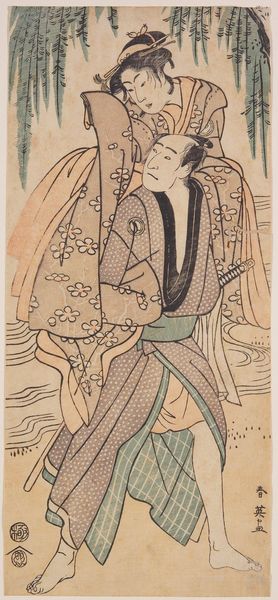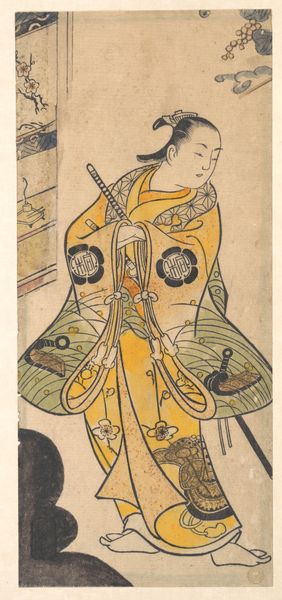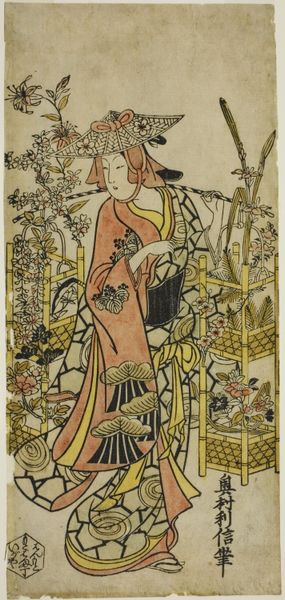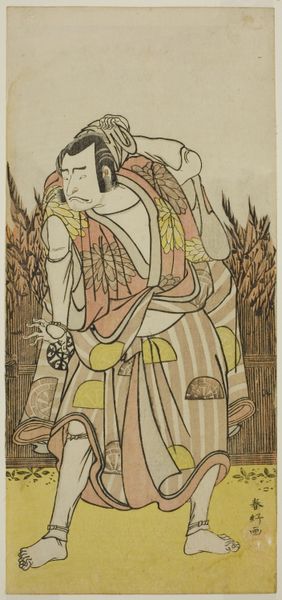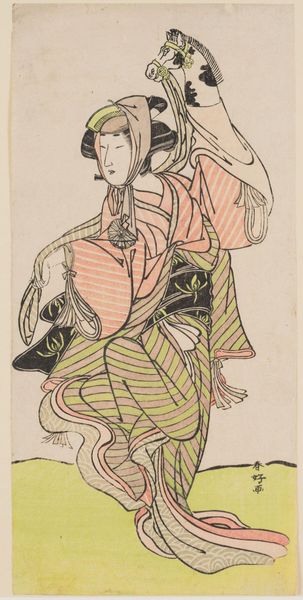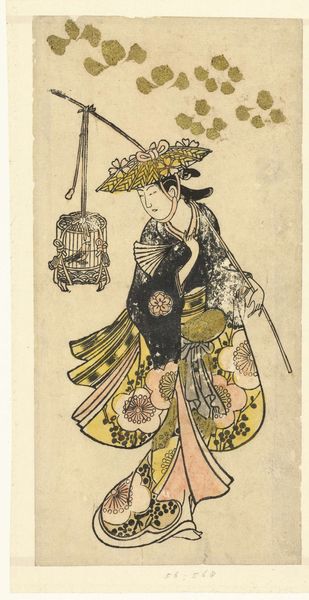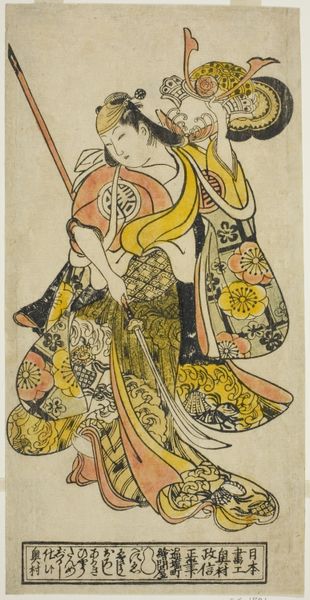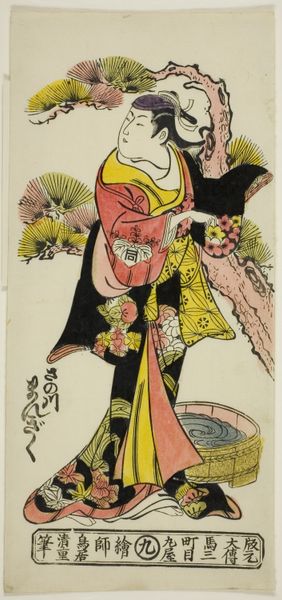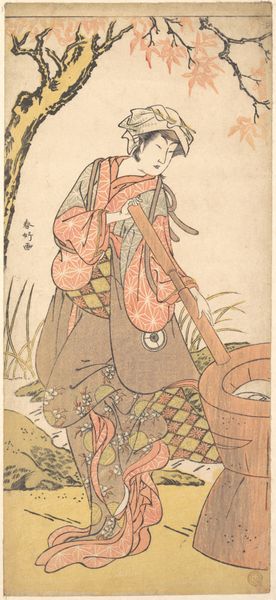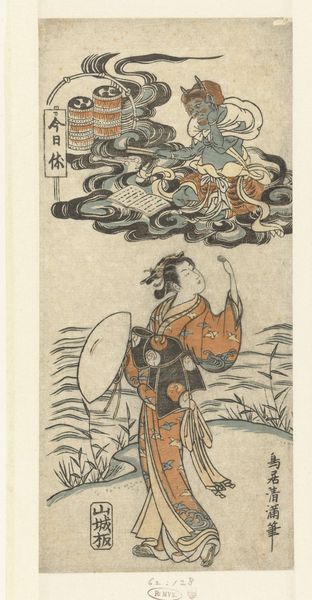
#
pen drawing
#
pen illustration
#
pen sketch
#
flower
#
personal sketchbook
#
ink drawing experimentation
#
pen-ink sketch
#
pen work
#
sketchbook drawing
#
sketchbook art
#
doodle art
Dimensions: height 308 mm, width 153 mm
Copyright: Rijks Museum: Open Domain
Curator: Welcome. We're standing before "Bloemenverkoopster," created sometime between 1730 and 1740 by Okumura Toshinobu. It appears to be a woodblock print, showcasing a woman selling flowers. Editor: It's deceptively delicate at first glance. The pale hues create an air of subdued elegance, but then your eyes trace the bold outlines and geometric patterns of the kimono and it feels altogether less straightforward. Curator: It’s fascinating how Toshinobu integrates a woman, seemingly a flower vendor, into a commercial space. The woodblock printing would have been a key aspect of commercial art at the time, expanding visual representation in Japanese society, wouldn't you say? What would her role represent in this society? Editor: Absolutely. This print, rather than simply depicting a woman selling flowers, subtly hints at gendered labor roles, commerce, and the intricate ways beauty is produced and marketed. Looking at it today, one thinks of performativity, that what is happening is on multiple levels of commerce. Curator: And in these prints, such women became idealized figures, reinforcing societal expectations while also potentially challenging existing social norms. Editor: That hat! The scale is intriguing – those blossoming cherry details compete for visual dominance with the vendor herself, which perhaps speaks volumes about what really attracts our gaze. What's really being offered? Curator: Exactly. And consider the floral motifs embedded within her clothing. Flowers are also integrated into the display from which she sells. In contrast, we get an inkling about the rapid urban developments during the Edo period where this piece fits in. Editor: The framing also directs the interpretation. Her beauty—bound by expectations around adornment, composure, presentation— is being commodified in the markets. We're complicit viewers, made aware of her position through this transaction of observing her. Curator: Considering that context, seeing this “Flower Seller” not just as an aesthetic object but as a socio-historical document definitely changes the work and enhances one's comprehension, I think. Editor: I agree, seeing art history meet contemporary cultural understanding, framed as gender, race and class representations enhances our critical awareness—it reminds us the art object lives, breathes and remains political.
Comments
No comments
Be the first to comment and join the conversation on the ultimate creative platform.

